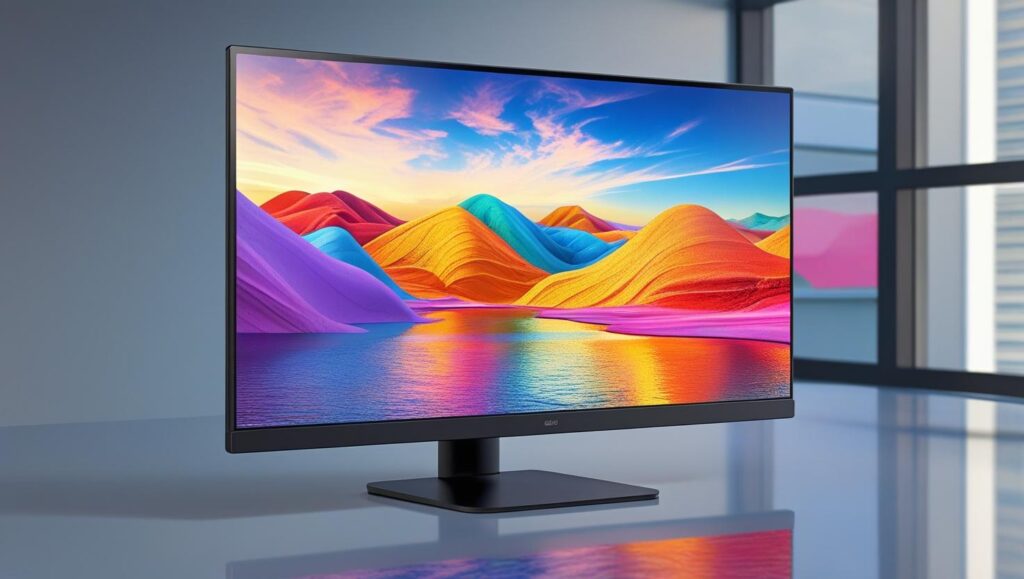Did you know your computer monitor could be one of the biggest hidden energy hogs in your setup? From high refresh rates that secretly tax your GPU to the surprising power difference between a bright and dark screen, numerous factors contribute to your electricity bill. In this ultimate 2025 guide, we demystify monitor power consumption. Dive into our interactive demos to see how brightness affects LCD and OLED panels differently, use our filterable tables to compare the most energy-efficient monitors on the market from top brands like Dell, Eizo, and ASUS, and discover which low-power display is the perfect fit for your office, gaming rig, or on-the-go setup. It’s time to make a smarter choice that saves you money and reduces your carbon footprint.
The Ultimate Guide to Extreme Power-Efficient Monitors
From pixel counts to panel tech, we break down what really drives energy use and help you find the most efficient display for your needs.
The Anatomy of Power Consumption
A monitor's energy use isn't a single number—it's a dynamic result of its size, resolution, brightness, and underlying technology. Understanding these factors is key to finding a truly efficient display.
Interactive Demo: Brightness vs. Power Draw
Simulated Screen
Power Draw
25W
On an LCD, the backlight is always on. Increasing brightness directly increases the backlight's power draw, making it the biggest factor in energy use.
Size & Resolution: More Pixels, More Power
A larger screen needs a more powerful backlight, and a higher resolution requires more processing. Both lead to higher energy consumption in the monitor and your computer's GPU.
Panel Technology: How Content Changes Consumption
OLED: Self-Emissive Pixels
Each pixel is its own light source. To display black, a pixel simply turns off, consuming almost no power. This makes OLEDs incredibly efficient with dark content.
LCD (IPS/VA): Constant Backlight
A backlight is always on. To display black, liquid crystals block the light. This means power draw is mainly tied to brightness, not the colors on screen.
The HDR Effect: Bright Highlights, High Power
High Dynamic Range (HDR) creates stunning visuals by hitting incredibly high peak brightness levels. The cost? Enabling HDR can sometimes double a monitor's power consumption compared to standard mode.
SDR Mode
HDR Mode
The Performance-Power Trade-Off
High refresh rates and resolutions deliver smoother, sharper images, but this performance comes at an energy cost—not just for the monitor, but for your entire system.
Refresh Rate & Resolution: The Power Penalty
The Solution: Variable Refresh Rate (VRR)
Technologies like G-Sync and FreeSync are game-changers for efficiency. By matching the refresh rate to the content, VRR allows the display to slow down when idle, drastically cutting the high power draw associated with fixed high refresh rates. Enabling VRR can reduce a GPU's idle power from over 100W to just 20W.
The Systemic Impact: Beyond the Monitor's Plug
A monitor's energy use isn't isolated. Its settings create a cascade of power demands that affect your entire computer, from the graphics card to the cooling fans.
The GPU Power Tax
A high-resolution, high-refresh-rate monitor forces your GPU to work harder, increasing its power draw. More subtly, a high refresh rate can prevent the GPU's memory from entering a low-power state, adding a "parasitic" power drain of 20-80 watts even when your computer is idle.
Cooling and CPU Load
The extra heat from a hard-working GPU must be expelled. This forces your system's fans to spin faster, consuming more power. In some cases, it can even increase the load on your room's air conditioning, creating a secondary energy cost.
Financial & Environmental Implications
Small Watts, Big Savings
Choosing a hyper-efficient monitor (15W) over a standard one (35W) can save 20 watts. While that seems small, it adds up.
40 kWh
Saved Annually (per user)
$3,000
Annual Savings (500 users)
15,000
Pounds of CO2 Saved (500 users, 5 years)
Calculations based on 2,000 work hours/year and $0.15/kWh.
Market Guide: The Most Efficient Monitors
Ready to choose? Use our interactive guide to filter and compare top-rated, power-efficient monitors available today. We've combined desktop and portable models to give you a complete overview.
Filter Your Results
| Model | Size | Resolution | Panel | Power (W) | Purchase |
|---|
Future Trends & Emerging Technologies
The quest for the perfect pixel continues. Here's a look at what's next for display technology and how it will impact power efficiency.
MicroLED: The Heir Apparent?
MicroLED combines the best of LCD and OLED. It's self-emissive like OLED but uses inorganic materials that promise higher brightness, a longer lifespan, and superior efficiency without the risk of burn-in. It's currently very expensive, but it's the technology to watch.
Smarter Power Management
Future monitors will use AI and integrated sensors to be more intelligent. Imagine a display that learns your habits, detects when you step away to instantly enter sleep mode, and integrates deeply with your OS to manage power states with no user input required.
6 Quick Tips to Maximize Efficiency
Lower Brightness
Adjust brightness to a comfortable, not maximum, level. This is the single most effective tip for LCDs.
Use Sleep Mode
Set your monitor to sleep after 5-10 minutes of inactivity. It uses less than 1 watt in sleep.
Turn It Off
Completely power down your monitor overnight to eliminate standby power drain.
Embrace Dark Mode
If you have an OLED screen, using dark themes in your OS and apps will save significant energy.
Enable VRR
For high-refresh-rate monitors, enable G-Sync/FreeSync to slash power use when you're not gaming.
Choose Simple Screensavers
Avoid active, bright screensavers. A blank screen or letting the monitor sleep is far more efficient.
